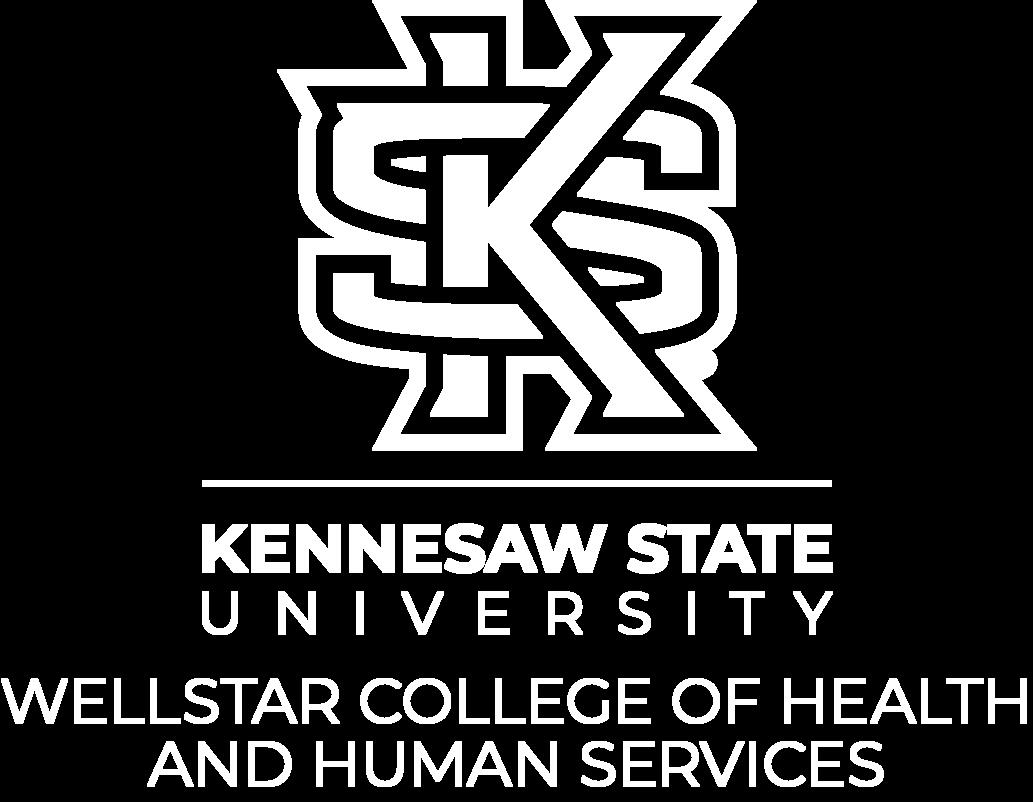
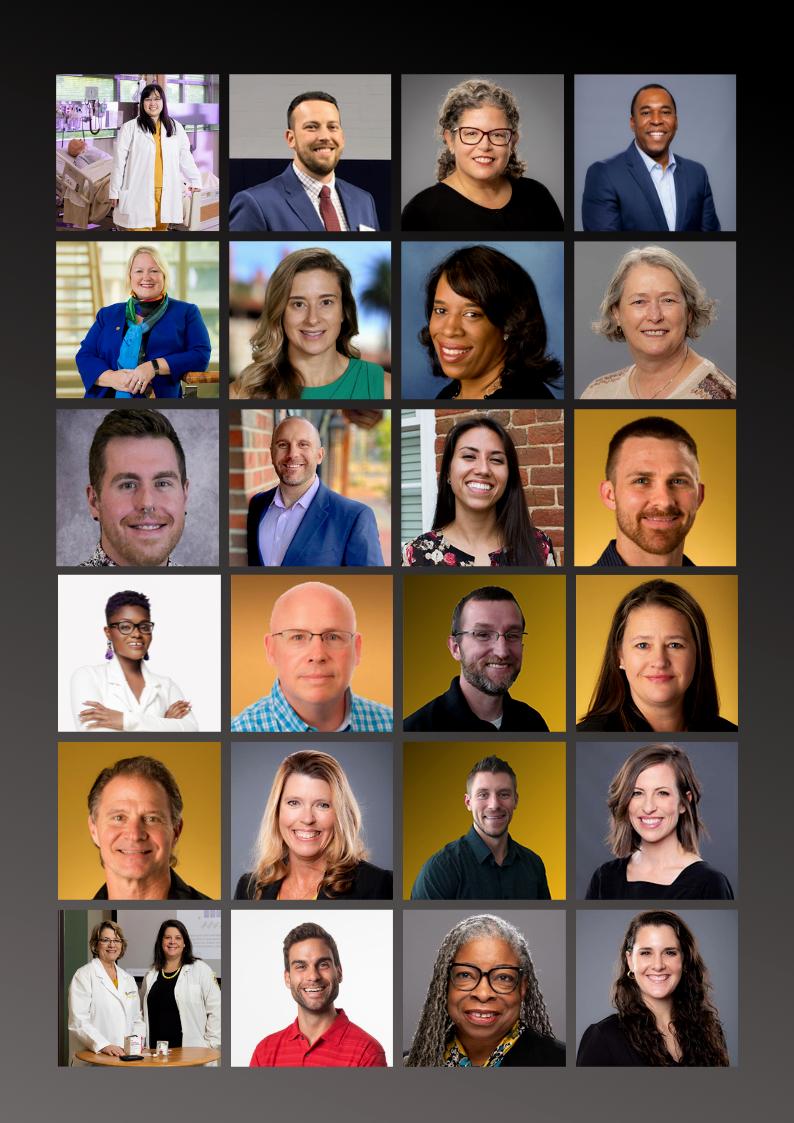





From disruptive practice to global solutions, this report highlights 2022 research that champions innovative approaches to meet our current healthcare needs.
2 Welcome
Faculty Spotlight





3
Featured Research
4
We are delighted to share with you our first Annual Report for Research. 2022 was a banner year for research and scholarship in Wellstar College, with record levels of federal funding and unprecedented growth in infrastructure. You’ll see impressive facts and figures in this report, but more than that, we hope you’ll recognize the broad impact of our research. Our college’s researchers and scholars work at the forefront of vital issues with local and global importance. We never lose sight of the significance of this work and how it exemplifies the overarching goal of Wellstar College: Transforming Lives.
5

6
7 Global Research Feature
9 Research Data
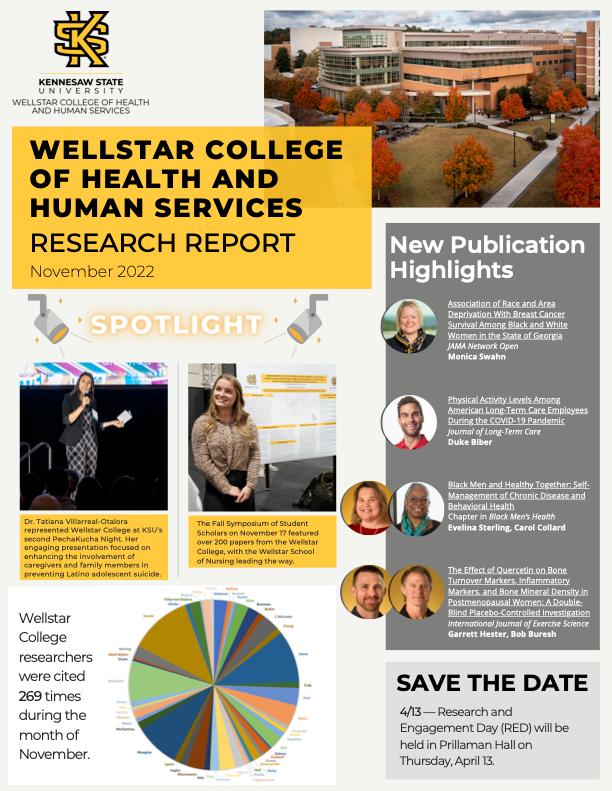
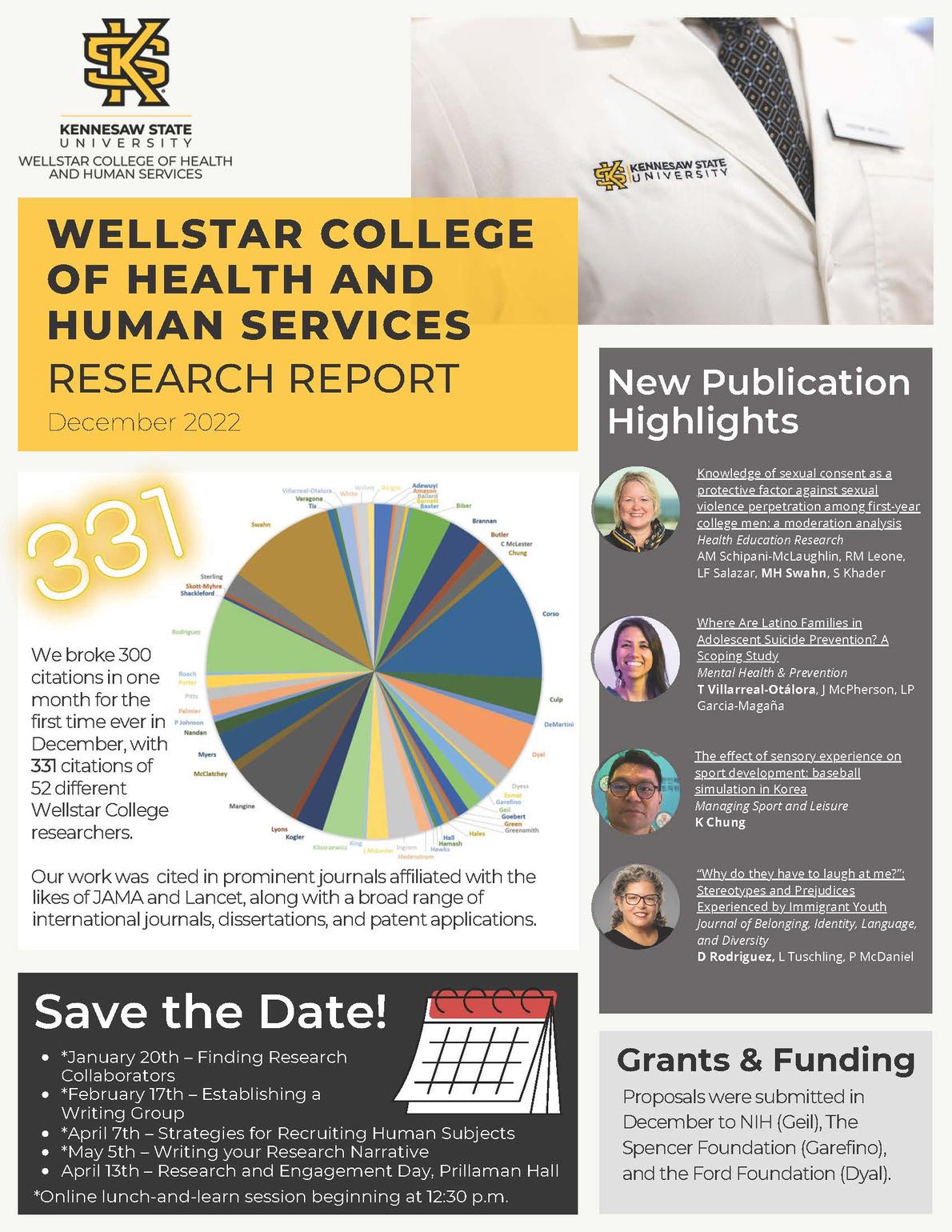
Welcome to our Research Report for 2022. These are just a few highlights of our rapidly accelerating research portfolio, which features multiple active grants from the National Institutes of Health, prominent book and journal publications, and national recognition for our innovative work with student researchers.
Look inside this inaugural issue for Research Features, a Q&A spotlight on three publications from 2022 that hint at the breadth of our interdisciplinary work, with insight from the authors.
We also spotlight our 2022 national award winner for Excellence in Mentoring Undergraduate Research in the Social Sciences.
Look at the reach of Wellstar College research By the Numbers.
Finally, we encourage everyone to subscribe to our monthly research report via the Wellstar College LinkedIn Page.
Mark Geil, Ph.D., Associate Dean for Research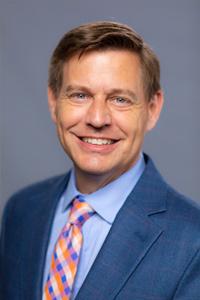
November2022
December2022
Wellstar College

Professor is recognized for her commitment to mentorship.
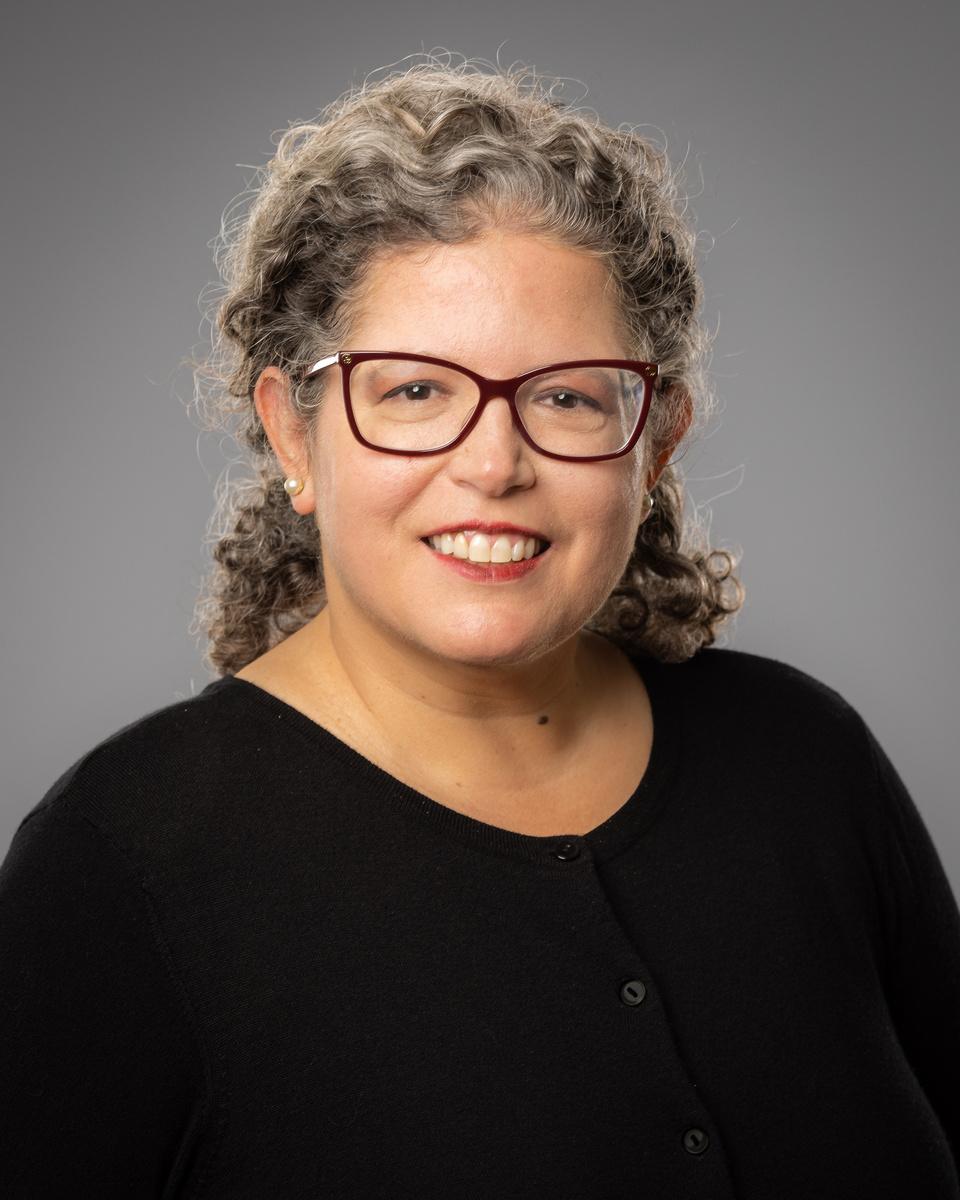
The Council on Undergraduate Research, the leading organization that champions highquality mentored undergraduate research and scholarship, presented Dr. Darlene Xiomara Rodriguez with the 2022 National Award for Excellence in Mentoring Undergraduate Research in the Social Sciences. Rodriguez said she takes pride in helping her undergraduate students flourish in research that they are passionate about and in guiding them into successful and fulfilling professional lives.
“I’m humbled and honored that things that people might never see - like opening my home and my heart to my students and seeing them become my colleagues - are being recognized at this level,” Rodriguez said. “I am especially grateful to Dr. Amy Buddie and the entire Office of Undergraduate Research team for their investment in me so I can equip a new generation of applied scholars.”

Your study focused on adolescents with chronic illnesses. In what ways do illnesses like Congenital Heart Disease affect their quality of life in ways we might not expect?
Although research with adolescents with chronic illnesses helps inform us, congenital heart disease (CHD) may be different because it often requires more complex care, which may affect their quality of life (QOL) Complications of moderate and complex CHD may be more acute and life threatening and may worsen over time Adolescents with CHD preparing for the transition into adulthood have lifelong cardiac monitoring and medical treatment requirements, including preventative care (i.e., dental preventative care, endocarditis prophylaxis, and health maintenance screening and monitoring). Additionally, these adolescents have strict medication adherence and maintenance of fluid balance regimens to prevent further complications.
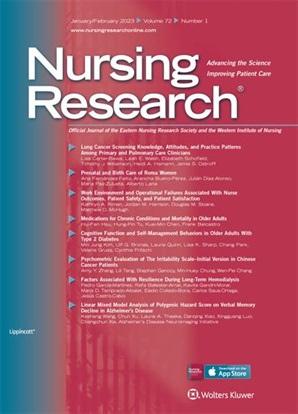
Adolescents with cyanotic defects and complex CHD must also have expectations for further cardiac surgeries or interventions as they transition to adulthood It is then critical that adolescents with CHD take responsibility for their care, recognize adverse symptoms, adhere to treatment and medication regimens, and attend follow-up appointments to make a successful transition into adulthood. Multiple studies have suggested that children and adolescents with CHD had poorer QOL than children with chronic illnesses and healthy peers, which is why examining factors affecting QOL for adolescents with CHD is important for improved patient outcomes and care.
Dr. Jenna Shackleford Assistant Professor of Nursing Wellstar School of Nursing
What does it mean to optimize autonomy and competence in these young people, and how might it help?
Autonomy is defined as being self-initiating of one’s actions. The development of autonomy has been important related to success in emerging adulthood and a protective factor for developing resilience during the transition to adulthood for adolescents with chronic illnesses. Competence is defined as an understanding of how to become effective in performing actions, specifically improved self-management of care and treatment adherence for adolescents. Additionally, a higher level of competence is a strong predictor of improved QOL for adolescents with chronic illnesses.
Therefore, supporting autonomy and competence may be important for developing better self-management practices and improved QOL for adolescents with CHD. Examples of improved autonomy and competence for adolescents with CHD include enhancing self-care related competence (i.e., responsibility for scheduling clinic appointments, communicating with providers, learning about medications and how to secure insurance coverage, taking medications as prescribed). Educating and assisting these adolescents is essential for developing lifelong health-related behaviors, a successful transition into adulthood, and better QOL.

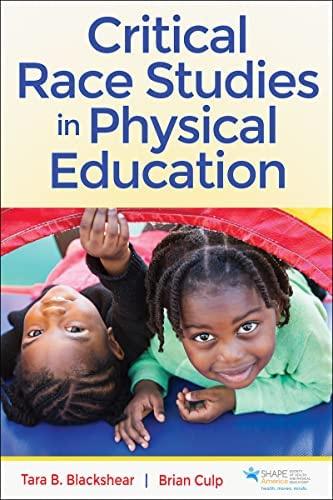
In the past few years, there have been discussions regarding race in physical education which have paralleled talks about race and equitable access to resources in schools Historically, physical education has been seen as only a place where students learn movement, fitness, play, and sports skills While there is much debate about the essential purpose of schooling other than preparation for work and social mobility, it is generally agreed that a school is a place where youth can learn to work with others as they get mentally and developmentally ready for society Physical education as a core piece of education is not immune to an examination of how it can be better Recognizing that space, movement, and perceptions of physicality have always been defined through the western world and Eurocentric frameworks and expectations, physical education needs an expanded framework that takes into account how children from other backgrounds learn about their world.

At a glance, this would seem as if this is an aggressive position until you consider that racism happens in our communities in recreational facilities, in fields of sport, as people participate in physical activity and other places of play We also have a history of legislative actions that have perpetuated discrimination against groups of people based only because of the color of their skin In the nonrecreational sense, we understand that while cities are seen as diverse, accessible, and multicultural, there are still areas that Black people for example are not expected to be in that are communicated in less formal, less direct, and less obvious ways We typically take these actions in our society for granted Physical education expanding the focus on these aspects, in addition to the current curriculum provides a great deal of promise for helping create a more humanizing society.
Future educators and those who work with youth can use these insights in order to prepare themselves better to teach diverse youth taking into account aspects of structural inequality and psychosocial considerations. Numerous research studies over the past 40 years have identified that teachers, teacher education candidates, youth workers, and professional development are not adequately equipped to teach diverse youth, in particular Black youth. Additionally, there is little discussion on racism, antiracist practices, and how to create better climates for youth from diverse ethnic and racial backgrounds to succeed. We must also consider that racial/ethnic minorities are 1.5 to 2 times more likely than whites to have the most significant chronic diseases and that children from these backgrounds are disproportionately neglected in terms of support and education to address health disparities in our society.
Augmented reality (AR) is a technology that overlays digitally created information on the user's view of the real world. While virtual reality transports users into a completely digital world, augmented reality takes selected digital elements (e.g., statistics) and overlays that digital information on the realworld environment. This can be done using devices such as smartphones, tablets, projectors, or head-mounted displays.
In the context of sports broadcasting, augmented reality is used to enhance the viewing experience for the consumer. One of the first uses of overlaid graphics in a sport broadcast was the NFL’s use of the “first down line” for its broadcasts. AR can be used to provide a more immersive and interactive viewing experience for the viewer by adding digital elements to the live footage of a sporting event, such as overlaying statistics, player information, and virtual graphics onto the field of play.
 Dr. Chad Goebert Assistant Professor of Sport Management Department of Exercise Science and Sport Management
Dr. Chad Goebert Assistant Professor of Sport Management Department of Exercise Science and Sport Management

We looked at individuals' intention to re-view or speak favorably through word of mouth and found that sport fans scored AR graphic overlays on broadcast highly on their intention to re-view that type of content and the likelihood that they would speak about that type of broadcast positively to others.
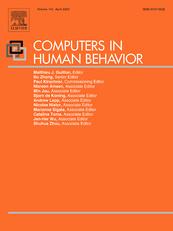
We also found that AR broadcasts were received differently by different generations, meaning that younger people were more likely to enjoy and re-view the AR-enhanced broadcasts than older fans.
However, an important finding of AR studies I have been a part of is to understand that the sport competition itself is still the core product being consumed. Broadcasters must be mindful of using AR graphics as a complementary piece of the action and not view it as a replacement for the core product.


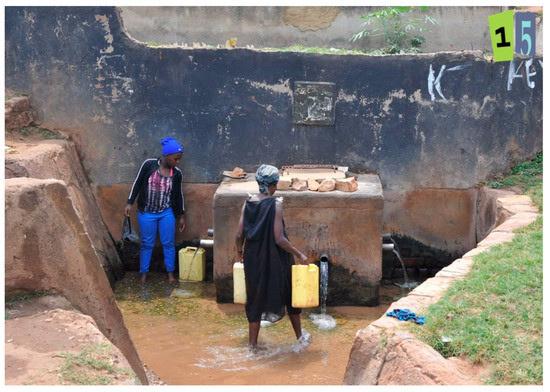

Last year we received a $3.3 million NIH Grant to study the social determinants of mental illness among young women who live in the slums of Kampala, Uganda. This mixed methods project has been designed to better understand the mental health trajectories among young women facing adversity and also whether vocational training may alter their stress levels and improve mental health outcomes (substance use, anxiety, depression, and suicidality). The goal is to see whether a practical intervention such as vocational training and skill building can mitigate the social determinants, and in particular the role of poverty, on mental health outcomes.
The project will have multiple components, including an epidemiological prospective cohort study to follow women over time. The science that is part of this project is quite rigorous as we will measure stress by collecting biomarkers in saliva, we will assess sleep patterns and we will also include a translational neuroscience component to see how the women respond to stressful tasks. We have not seen any study like this on the African continent so we are really implementing a groundbreaking study.
As we engaged with community members, it was clear that it would be important to first assess how the young women think of a place and mental health. As such, we conducted a set of focus groups and also a photovoice project. These were designed to help us understand how young women see mental health and their environment. It has long been clear that the environment impacts health in various ways, but less has been done to understand how the environment impacts mental health specifically. The current paper sought to dive a bit deeper to understand how young women perceive mental health and well-being and also the role of a physical place on mental health outcomes.

We learned quite a bit and intriguingly, it was challenging to separate the physical from the social space. "Participants frequently reported on the social environment and reflected on harassment, discrimination, alcohol use, and criminal behavior that did not reflect a specific physical space, but rather the embedded social interactions they may face or observe by living in close proximity to hotspots for criminal activity."
This study was not designed to help us design an intervention but rather to make sure we included relevant measures for the cohort study and also the places to consider for the community mapping we were pursuing next. As part of this project, we wanted to capture the real-world complexities and challenges that the women face so hearing in their own words about their lived experiences and perceptions was critically important as we finalized the design of the other study components.
"Given the dire shortages of mental health services and care that are available in this setting, a better understanding of young women’s perceptions of place and mental health will be key for low-cost interventions and strategies to mitigate the contextual factors that may exacerbate mental illness."
 Dean of Wellstar College Professor of Health Promotion and Physical Education Wellstar College of Health and Human Services
Dean of Wellstar College Professor of Health Promotion and Physical Education Wellstar College of Health and Human Services


Beginning in March 2022, we launched an innovative mechanism to track when the work of researchers in Wellstar College is cited by other researchers in their publications such as journal articles, books, dissertations, and patent applications. These citations indicate the impact of our research and the ways it is being used around the world to transform lives. On average, Wellstar College researchers are cited over ten times every day.
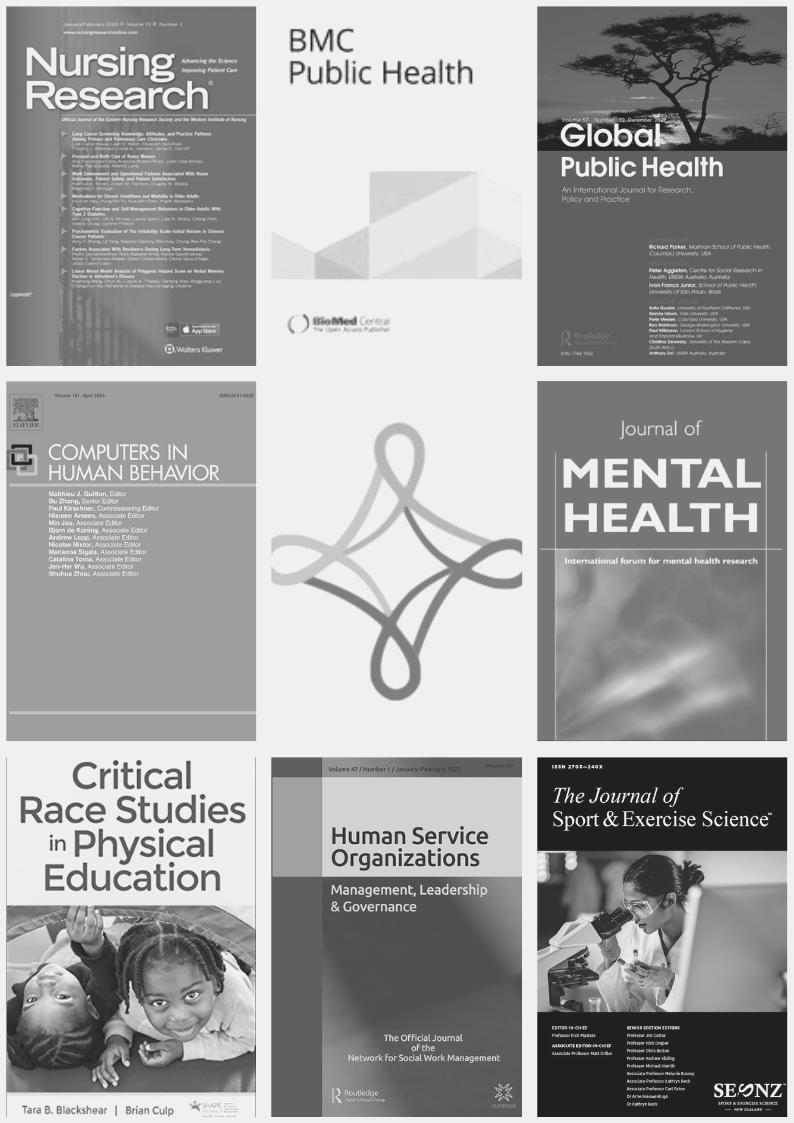

In partnership with the KSU Library System, Wellstar College worked in 2022 to increase research dissemination via Digital Commons, our repository for free, full-text scholarly articles. We join hundreds of universities and colleges worldwide to showcase our work and broaden its impact. We hosted two Digital Commons Upload Days with the Library and dramatically increased our Digital Commons presence.
View the full Wellstar College Collection on Digital Commons





